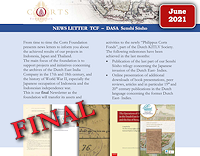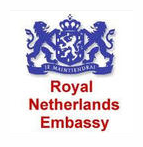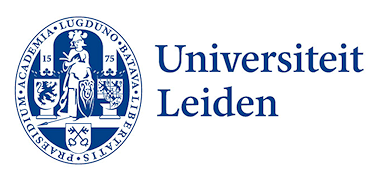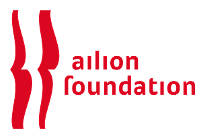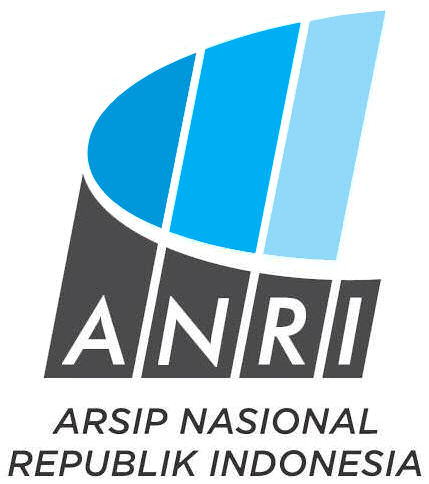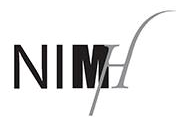Current language
Contact

email:
contact[at]cortsfoundation.org
Newsletter
Our final newsletter
(June 2021)
is available for download
See also:
- news letter 2019 November
- news letter 2019 Augustus
- news letter 2018
Projects
TCF on other websites
- Access to Asian Archives
- ANP news item on the launching of DASA website
- Center for Early Modern History
- Knowledge Institution Digital Culture
- Dutch historians website
- Historici.nl article about the Dutch Archives
- Historical Society Noordoost-friesland
- International Institute for Asian Studies
- Dutch Maritime Portal
- VOC website
- History News Magazine
- ANRI Youtube
- Trouw Newspaper
- Computable
November 2019: Book presentation Herman Keppy
Journalist Herman Keppy presented his latest book 'Zijn jullie kerels of lafaards? De Indische en Indonesische strijd tegen de nazi's 1940-'45' (Eng: Are you men or cowards? The Indian and Indonesian resistence against the Nazis 1940-'45) on Friday, November 29th, in the 'Verzetsmuseum' (Eng: Museum of the Resistence) in Amsterdam. The Corts Foundation made a financial contribution to realize this important publication.
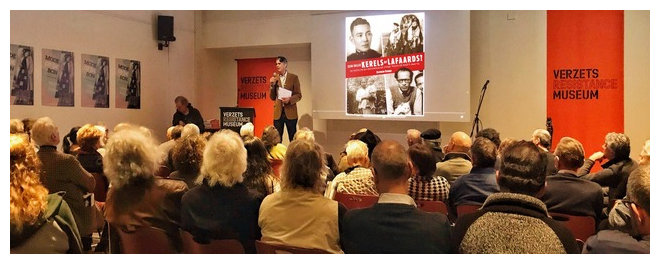
In the Verzetsmuseum copies of the book were given to children of East Indies and Indonesian people who fought against the nazis in the Netherlands. One of them, the well known Dutch singer Ernst Jansz (of the band called Doe Maar), spoke and sang about his father Rudi who had joined the resistence in Amsterdam during the war. Rudi Jansz was a member of the East Indies community that existed long before the war in the Netherlands. He was mobilised and came into action on May 10th, 1940, but later on was captured for his resistence activities. He was not the only one, as it turns out in the book by Keppy.
November 2019: Publication Mijer from 1848 now digital online
Mr. P. Mijer was vice-president of the high court of Justice and the high military court of Justice of the Dutch East Indies, and in 1848 he requested permission by the government in Batavia to publish several historical documents. Because the mentioned documents were of historical importance back at the time, and still are nowadays, the Corts Foundation has scanned this book publication by Mijer and created a full search with text recognition. It does justice to what Mijer himself envisioned and stated in the publication introduction: ‘... with dual objectives to make the exact texts of the oldest and most important documents of the former colonial governmental system sustainable for the future and to spread the knowledge of her main principles to a general audience.’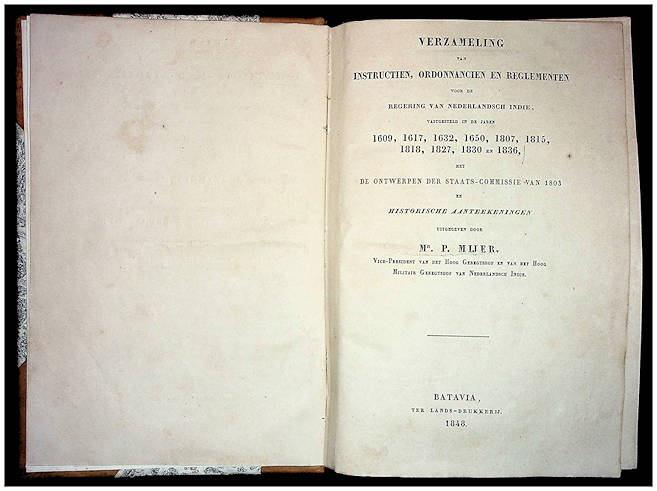 It concerns a collection of instructions by Dutch authorities dating back to 1609, 1617, 1632, 1650, 1807, 1815, 1818, 1827, 1830 and 1836, addressed from Holland to the Governor Generals and the Council of the Indies and their succeeding government institutions. Mijer searched for original manuscrips in Batavia and especially from the early 17th century, but found only ‘unmarked and unofficial’ copies. He used these for his publication. Possibly the real originals can be found in the Netherlands in the archives of the so called ‘Staten Generaal’. Additionally he used a number of instructions from the early nineteenth century, a period with political changes in the Netherlands and French and British rule over the East Indies.
It concerns a collection of instructions by Dutch authorities dating back to 1609, 1617, 1632, 1650, 1807, 1815, 1818, 1827, 1830 and 1836, addressed from Holland to the Governor Generals and the Council of the Indies and their succeeding government institutions. Mijer searched for original manuscrips in Batavia and especially from the early 17th century, but found only ‘unmarked and unofficial’ copies. He used these for his publication. Possibly the real originals can be found in the Netherlands in the archives of the so called ‘Staten Generaal’. Additionally he used a number of instructions from the early nineteenth century, a period with political changes in the Netherlands and French and British rule over the East Indies.
The digital version of this publication can be viewed here and downloaded for free.
Mijer, Batavia (1848, 560 pages) - [Open online viewer] [PDF - 18mb]
November 2019: 17th century shipping from the archives
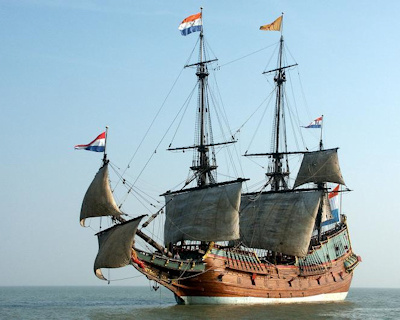 The Indonesian VOC archives hold thousands of references on the shipping of the 17th and 18th century. It provides insight into a part of the world wide maritime network of trading posts, and can be studied by using large data sets that can be distilled from historical manuscripts.
The Indonesian VOC archives hold thousands of references on the shipping of the 17th and 18th century. It provides insight into a part of the world wide maritime network of trading posts, and can be studied by using large data sets that can be distilled from historical manuscripts.
The daily journals of the Castle of Batavia is part of the VOC archives of the National Archives of Indonesia (ANRI) in Jakarta, Indonesia. These daily journals have been scanned a few years ago and published online by the Corts Foundation and ANRI. The 117.390 marginalia of these manuscripts have been collected by senior archivist Dr. Mona Lohanda and eventually brought together in a digital document, that became the base of the online database providing a secundary entry to the scans.
The marginalia are short sentences, in the margin of the page, that summarize the adjacent text. Some of these marginalia contain names of persons, places or ships. They form separate indexes and thus access entries to the tens of thousands of marginalia (see the website of sejarah-nusantara>>).

It is not only the large ships that sailed between Batavia and Holland with big cargo's of spices, porcelain, textiles and other goods that were mentioned in the marginalia. Also thousands of other ships sailing between Batavia and numerous places in Asia, Arabia, India and many other countries were mentioned. More than 7500 ships of all kind and size and nationality.
Filtering the marginalia on ship names result in a new dataset with 37.434 records. These records clear up the many ship movements, and also cargo lists, correspondence, sales and several shipwrecks and disasters.The new dataset is freely downloadable and available for further scientific research (Excel download here>>).
November 2019: Four volumes 'Priangan' digital available
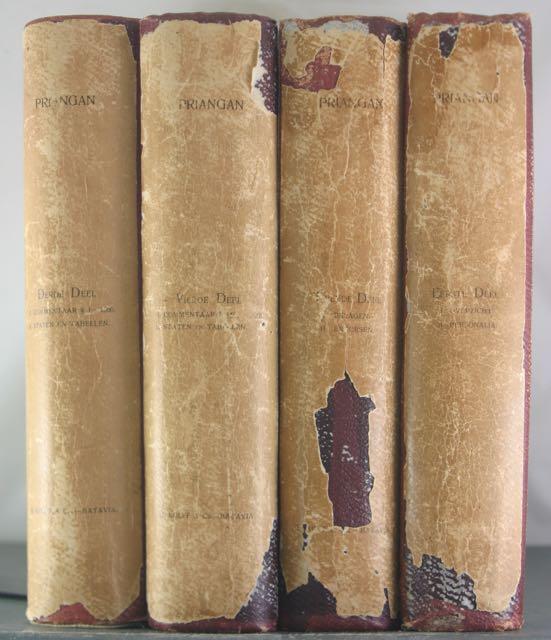 Following the rescanning and digital online publication of the three volumes of 'Oud Batavia' by F. de Haan (see earlier news item, october), The Corts Foundation decided to also publish the preceding standard work of 'Priangan'. These four volumes were produced by de Haan between 1910 and 1912 when at the time he was the national archivist in the Dutch East Indies.
Following the rescanning and digital online publication of the three volumes of 'Oud Batavia' by F. de Haan (see earlier news item, october), The Corts Foundation decided to also publish the preceding standard work of 'Priangan'. These four volumes were produced by de Haan between 1910 and 1912 when at the time he was the national archivist in the Dutch East Indies.
His assignment was to conduct 'a historical research to the origin and the development, the working and the consequences of the organization of Preager regents by the Dutch East India Company'. Geografically speaking it concerns the central part of Java, where Batavia (Jakarta) was situated, and that was controlled and managed by the Dutch with regents.
All four original volumes of 'Priangan' were rescanned (including OCR-text recognition) and made fully digital visible and searchable on this website. Each volume is in a separate PDF file format shown online and freely available as download.
VOLUME 1 (1910, 896 pages) - [Open online viewer] [PDF - 30mb]
VOLUME 2 (1911, 937 pages) - [Open online viewer] [PDF - 35mb]
VOLUME 3 (1912, 993 pages) - [Open online viewer] [PDF - 39mb]
VOLUME 4 (1912, 1045 pages) - [Open online viewer] [PDF - 40mb]
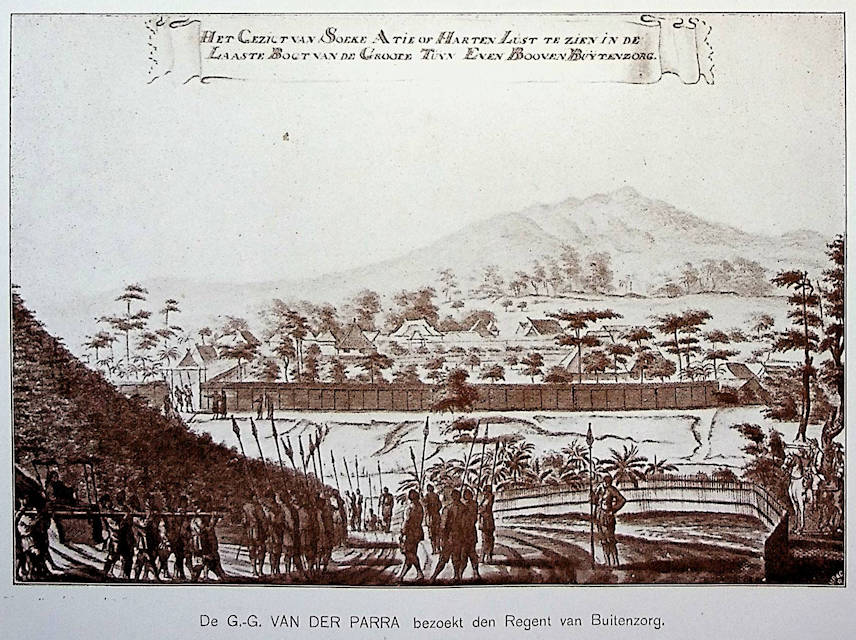

 English
English  Nederlands
Nederlands 